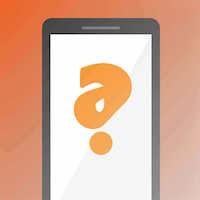
PR2 Formative Assessment 2: Writing Review of Related Literature(Part 2)
Quiz by JONALD ROSARIO
Feel free to use or edit a copy
includes Teacher and Student dashboards
Measure skillsfrom any curriculum
Measure skills
from any curriculum
Tag the questions with any skills you have. Your dashboard will track each student's mastery of each skill.
With a free account, teachers can
- edit the questions
- save a copy for later
- start a class game
- automatically assign follow-up activities based on students’ scores
- assign as homework
- share a link with colleagues
- print as a bubble sheet
12 questions
Show answers
- Q1What is the purpose of making an annotated bibliography?To summarize and synthesize the main points of each source.To compile full citation information and provide a summary and analysis for each source.To organize and structure a literature review.To compare and contrast different research methodologies.To avoid plagiarism by keeping track of sources.30s
- Q2Which of the following can help you identify trends and patterns in the literature?Examining influential theories or studies that changed the field.Looking for certain approaches that become more or less popular over time.Analyzing debates, conflicts, and contradictions in the sources.Identifying recurring questions or concepts across the literature.Comparing results and conclusions from different research methods.30s
- Q3Which approach to organizing a literature review focuses on tracing the development of the topic over time?MethodologicalChronologicalTheoreticalThematicHistorical30s
- Q4If you draw your sources from different disciplines or fields that use a variety of research methods, what approach to organizing a literature review should you consider?InterdisciplinaryMethodologicalTheoreticalChronologicalThematic30s
- Q5What should be included in the introduction of a literature review?The focus, purpose, and scope of the review, as well as the criteria used for selecting literature.An analysis and interpretation of previous studiesA historical background of the topicA brief summary of the scholarly context and the central problem or research questionA summary of the main agreements and disagreements in the literature30s
- Q6What should you do when writing a literature review to go beyond simply paraphrasing other researchers' studies?Critically evaluate the strengths and weaknesses of your sources.Draw connections, comparisons, and contrasts in well-structured paragraphs.Summarize and synthesize the main points of each source.Analyze and interpret the findings, discussing their significance in relation to the literature as a whole.Provide an overview of the main agreements and disagreements in the literature.30s
- Q7What should be included in the conclusion of a literature review?An overview of historical background and previous studiesAn emphasis on the timeliness of the topicA discussion of mainstream versus alternative viewpointsA comparison of results and conclusions from different research methodsA summary of the main agreements and disagreements in the literature, any gaps or areas for further research, and your overall perspective on the topic.30s
- Q8What is the purpose of critically evaluating your sources in a literature review?To provide an overview of the main points of each source.To draw connections, comparisons, and contrasts in the review.To summarize the debates, conflicts, and contradictions in the literature.To mention the strengths and weaknesses of your sources.To synthesize the findings of different studies in the field.30s
- Q9What should the introduction of a literature review establish?The main agreements and disagreements in the literature.The historical background and methodologies of the topic.The gaps and areas for further research.The focus, purpose, and scope of the literature review.30s
- Q10What should you do while writing a literature review to ensure coherence and relevance?List and summarize sources in order, paraphrase other researchers' studies.Trace the development of the topic over time, compare results from different research methods.Compile full citation information, highlight gaps in the literature, discuss various theories and definitions.Summarize and synthesize, analyze and interpret, critically evaluate, write in well-structured paragraphs.30s
- Q11What should the body of a literature review include?Overview of the main points of each source.Strengths and weaknesses of the sources.Historical background, methodologies, previous studies, mainstream versus alternative viewpoints, principal questions being asked.Main agreements, disagreements, areas for further research, overall perspective.30s
- Q12What can you look for when analyzing the connections and relationships between the sources you've read?Chronological, thematic, methodological, theoretical.Historical background, methodologies, previous studies, viewpoints.Trends and patterns, themes, debates and conflicts, pivotal publications, gaps.Main agreements, disagreements, areas for further research, overall perspective.30s